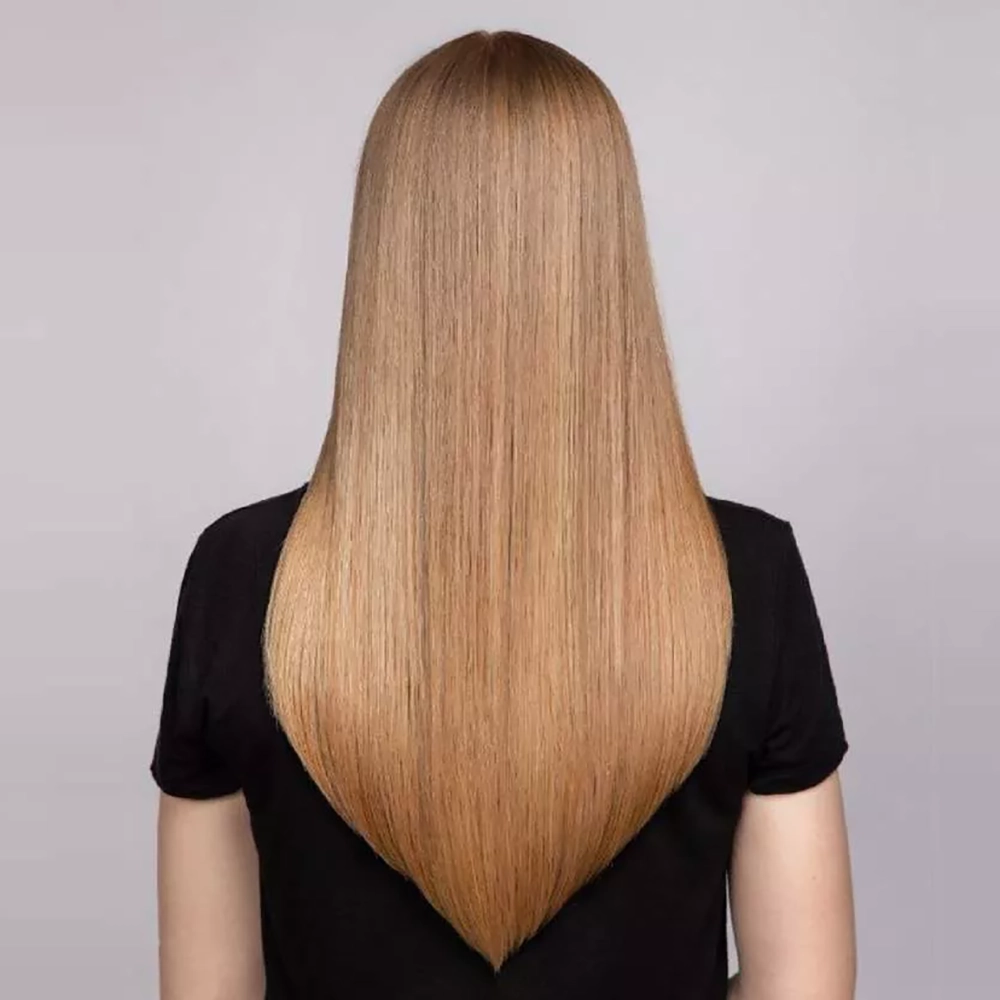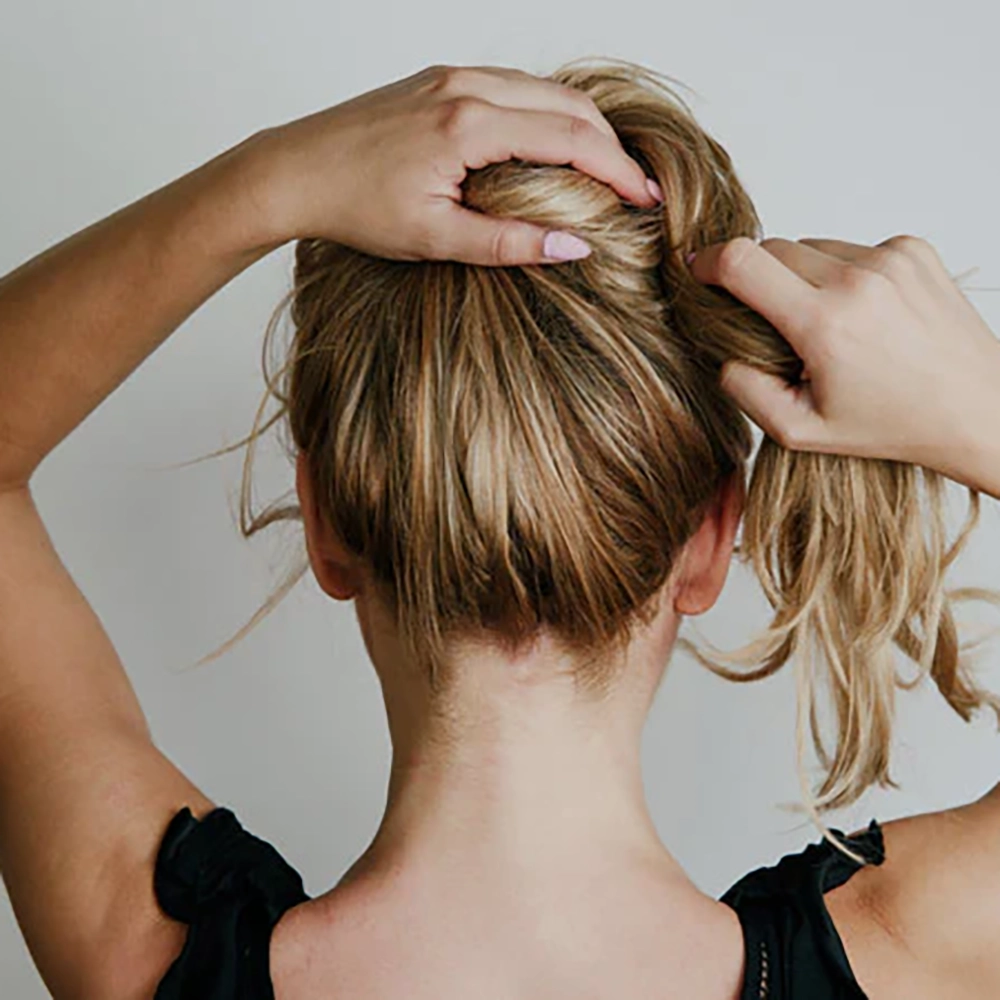Understanding your hair type and texture
The way your hair looks and behaves is largely determined by its type and texture. Understanding these aspects of your hair is crucial in order to properly care for and style it. Hair type refers to the shape of the individual strands, while hair texture refers to how fine or coarse it feels. Both factors play a role in determining the best products and techniques to use on your hair. In this blog post, we will delve into the different hair types and textures, and provide guidelines on how to identify and care for your specific hair type.
Hair Types:
When it comes to hair types, there are generally four main categories: straight, wavy, curly, and kinky. Straight hair is characterized by its uniformity, with the strands lacking any noticeable curl or wave. Wavy hair has a slight bend or loose wave pattern, whereas curly hair forms more distinct and tighter curls. Kinky hair, also known as coily or afro-textured hair, has tight, springy curls that form intricate patterns. It’s important to note that individuals may have a combination of different hair types on their head, making it necessary to consider the overall pattern.
Hair Textures:
While hair type refers to the shape of the strands, hair texture describes how your hair feels and behaves. Texture is typically categorized as fine, medium, or coarse. Fine hair strands are usually thin and light, giving the hair a softer and silkier appearance. Medium hair is neither too thin nor too thick, striking a balance between fine and coarse. Coarse hair, on the other hand, has thicker strands that can feel rough to the touch. Understanding your hair texture is important for determining the right products and styling techniques that will work best for your hair.
| Hair Type | Hair Texture |
|---|---|
| Straight | Fine to Coarse |
| Wavy | Fine to Coarse |
| Curly | Fine to Coarse |
| Kinky | Coarse |
Knowing your hair type and texture is the first step towards achieving and maintaining healthy, beautiful hair. It allows you to choose the right products, follow appropriate styling techniques, and develop a hair care routine tailored to your specific needs. Embrace and embrace your hair’s unique characteristics, and let its natural beauty shine through.
Factors that affect the frequency of washing
When it comes to washing your hair, there is no one-size-fits-all approach. The frequency of washing depends on various factors, including your hair type, texture, and lifestyle. Understanding these factors can help you determine how often you should wash your hair to keep it clean and healthy.
Hair Type: One of the foremost factors that influence the frequency of washing is your hair type. Different hair types require different levels of cleansing. For example, individuals with oily hair may need to wash their hair more frequently to remove excess oil and maintain a fresh appearance. On the other hand, people with dry or curly hair may need to wash their hair less often to avoid stripping away natural oils that keep the hair moisturized and nourished.
Hair Texture: Another crucial factor to consider is your hair texture. Fine, straight hair tends to become greasy and limp more quickly compared to thick or coarse hair. Therefore, individuals with fine hair may need to wash their hair more frequently to prevent it from appearing flat and greasy. However, those with thicker hair may be able to go longer periods between washes without their hair appearing excessively oily.
Lifestyle: Your lifestyle also plays a significant role in determining how often you should wash your hair. If you frequently engage in activities that make your hair dirty, such as exercising or working in a dusty environment, you may need to wash your hair more frequently. Additionally, if you use styling products like gels, sprays, or serums regularly, these products can build up in your hair over time, making it necessary to wash your hair more often to remove the buildup.
- Identify your hair type and texture (straight, wavy, curly, fine, thick, etc.)
- Consider how often your scalp gets oily or greasy.
- Take into account your lifestyle and the activities you engage in regularly.
| Factors | Recommended Frequency of Washing |
|---|---|
| Oily Hair | Every other day or every two days |
| Dry or Curly Hair | Every three to four days or even longer |
| Fine, Straight Hair | Every day or every other day |
| Thick or Coarse Hair | Every two to three days |
| Active Lifestyle or Frequent Use of Styling Products | Every other day or as needed |
Remember, these recommendations are general guidelines and may need to be adjusted based on personal preference and individual hair needs. It is important to listen to your hair and scalp and find a washing frequency that keeps your hair clean, healthy, and manageable. By understanding the factors that affect the frequency of washing, you can establish a hair care routine that caters to your unique needs and maintains the overall health and appearance of your hair.
Determining your hair’s natural oil production
Determining your hair’s natural oil production is key to understanding how to properly care for your hair. The amount of oil produced by your scalp can greatly influence how often you should wash your hair and what products you should use. Some individuals have naturally oily hair, while others have drier hair that requires more hydration. By understanding your hair’s natural oil production, you can tailor your hair care routine to best meet its needs.
There are several factors that can affect your hair’s natural oil production. Firstly, genetics play a significant role in determining how much oil your scalp produces. If your parents or siblings have oily hair, chances are you have a higher oil production as well. On the other hand, if your family members have drier hair, you may naturally produce less oil. Additionally, hormonal imbalances can impact oil production. Puberty, pregnancy, and menopause can all cause fluctuations in hormone levels, which can in turn affect the amount of oil your scalp produces.
It’s important to pay attention to your hair and scalp to determine your natural oil production. If you notice that your hair becomes greasy and oily within a day of washing, you likely have high oil production. Conversely, if your hair feels dry and brittle even after washing, you may have low oil production. You can also perform a simple test to determine your hair’s oiliness. Wash your hair as you normally would and avoid using any styling products. After 24 hours, use a clean tissue or blotting paper to gently press against your scalp. If the tissue comes away with visible oil, you have high oil production.
- Maintain a balanced washing routine: Individuals with high oil production may need to wash their hair more frequently to prevent it from appearing greasy. On the other hand, those with low oil production should avoid excessive washing, as it can strip away the natural oils and further dry out the hair.
- Choose the right products: If you have high oil production, opt for lightweight shampoos and conditioners that are designed for oily hair. Look for labels that mention “clarifying,” “oil control,” or “volumizing.” For those with low oil production, select hydrating and moisturizing products that provide nourishment to your hair.
- Diet and hydration: What you consume also affects your hair’s natural oil production. Eating a balanced diet with plenty of fruits, vegetables, and healthy fats can help regulate oil production. Additionally, staying hydrated by drinking enough water throughout the day is crucial for maintaining healthy hair and scalp.
| Signs of High Oil Production: | Signs of Low Oil Production: |
|---|---|
| – Greasy appearance within a day of washing | – Dry and brittle hair |
| – Frequent need to wash hair | – Lack of natural shine |
| – Scalp feels oily and greasy | – Itchy and flaky scalp |
Determining your hair’s natural oil production may require some trial and error. It’s essential to listen to your hair and adjust your routine accordingly. Finding the right balance of cleansing and moisturizing can help you maintain healthy, manageable hair. Remember, everyone’s hair is unique, and what works for one person may not work for another. Embrace your natural hair and experiment with different techniques and products to discover what works best for you.
Guidelines for washing short hair
When it comes to maintaining short hair, it’s essential to establish a proper washing routine to keep it clean and healthy. Washing short hair requires a different approach compared to longer locks, as the length of the hair affects how often you should wash it and the products you should use. In this blog post, we will provide you with some guidelines for washing short hair to help you maintain its freshness and shine.
Finding the right frequency:
The frequency of washing your short hair depends on several factors such as your natural oil production, scalp condition, and lifestyle. On average, it is recommended to wash short hair every two to three days to avoid stripping it of its natural oils entirely. However, if you have an oily scalp or engage in activities that cause excessive sweating, you might need to wash your short hair more frequently.
Choosing the right products:
When it comes to selecting hair care products for short hair, opt for lightweight formulas that won’t weigh down your strands. Look for shampoos and conditioners that are specifically designed for short hair or those labeled as “clarifying” to remove excess oil and residue. Avoid using heavy conditioners or deep conditioning treatments near the roots as they can make your hair appear greasy.
Proper technique:
The way you wash your short hair can also impact its overall health and appearance. Start by wetting your hair thoroughly with warm water to open up the cuticles and allow the product to penetrate effectively. Apply a small amount of shampoo to your palms and massage it into your scalp in circular motions. Rinse out the shampoo thoroughly, ensuring no residue is left behind. When applying conditioner, focus on the mid-lengths and ends, avoiding the scalp to prevent it from appearing oily. Rinse out the conditioner completely with cool water to seal the cuticles and add shine.
By following these guidelines for washing short hair, you can maintain a clean and fresh look without compromising its health. Remember to adjust your washing routine based on the specific needs of your hair to achieve optimal results. Keep in mind that over-washing or using harsh products can lead to dryness and damage, so listen to your hair’s signals and find the balance that works for you.
Signs that your short hair needs washing
Keeping your hair clean and fresh is an essential part of personal hygiene. It not only enhances your overall appearance but also contributes to maintaining a healthy scalp. While the frequency of washing hair may vary from person to person, it is important to be able to recognize the signs that indicate when your short hair needs washing. Ignoring these signs can lead to discomfort and potential hair and scalp issues in the long run.
There are several clear signs that suggest your short hair is in need of a wash. Dull and greasy strands are one of the most obvious indicators. When your hair starts to look flat and greasy, it is a sign that natural oils and product buildup have accumulated on the scalp and hair shafts. Additionally, if you notice a distinct odor coming from your hair, it may be time for a wash. Sweat, environmental pollutants, and excess oil can create an unpleasant smell that is difficult to ignore.
Another common sign that your short hair may need washing is excessive itchiness. If you find yourself constantly scratching your scalp, it could be a result of dirt, bacteria, or dead skin cells accumulating on the scalp’s surface. This build-up can also lead to flakiness or dandruff. Dandruff appears as white or yellowish flakes on the scalp and hair, and it can be embarrassing and uncomfortable.
In some cases, your short hair may feel heavy and weighed down when it needs washing. This heaviness is often caused by the accumulation of dirt, oil, and styling products that have not been removed through regular cleansing. Additionally, if your hair becomes tangled and difficult to manage, it may be an indication that it is dirty and needs washing. Clean hair is generally easier to style and detangle, as the natural oils that build up over time can make the strands stick together.
Tips for maintaining cleanliness between washes
Keeping your hair clean and fresh can be a challenge, especially when you don’t want to wash it every day. However, with a few simple tips, you can maintain cleanliness between washes and keep your hair looking and feeling its best.
1. Use dry shampoo:
One of the easiest ways to freshen up your hair between washes is by using dry shampoo. This miracle product absorbs excess oil and adds texture to your hair, making it look and feel cleaner. Simply spray it onto your roots, wait a few minutes, and then brush it out. Dry shampoo is great for those busy days when you don’t have time for a full wash and style.
2. Brush your hair regularly:
Brushing your hair regularly not only helps distribute natural oils from your scalp to the lengths of your hair but also removes dirt and debris. This simple yet effective step can make a big difference in the cleanliness of your hair between washes. Use a brush with natural bristles to prevent excessive breakage and promote a healthier scalp.
3. Avoid touching your hair:
As tempting as it may be, try to avoid touching your hair throughout the day. The natural oils on your hands can transfer to your hair, making it greasier and dirtier. Additionally, touching your hair can cause frizz and disrupt your hairstyles. If you need to adjust your hair, use a wide-toothed comb or your fingers to minimize damage and maintain cleanliness.
4. Use quality hair accessories:
Investing in high-quality hair accessories can help you maintain cleanliness between washes. Opt for hair ties, clips, and headbands that won’t snag or pull on your hair. Choosing accessories made from gentle materials like silk or satin can reduce friction and prevent oil buildup. Additionally, regularly clean your hair accessories to remove any dirt or oil residue.
5. Protect your hair while sleeping:
Your sleep can have a significant impact on the cleanliness of your hair. To keep your locks fresh, consider wrapping your hair in a silk or satin scarf or using a silk or satin pillowcase. These fabrics help minimize friction, prevent tangles, and reduce oil transfer, keeping your hair cleaner for longer.
Conclusion:
By following these simple tips, you can maintain cleanliness between washes and keep your hair looking and feeling great. Remember to use dry shampoo, brush regularly, avoid touching your hair, use quality accessories, and protect your hair while sleeping. With a little extra care, you can go longer between washes without sacrificing cleanliness or style.
Adjusting your hair washing routine as needed
The frequency at which you should wash your hair depends on various factors such as your hair type, texture, and overall lifestyle. Having a consistent hair washing routine is essential for maintaining healthy and clean locks, but it’s also important to be flexible and make adjustments as needed. In this blog post, we will discuss the importance of adjusting your hair washing routine and provide some useful tips to help you determine when and how often you should wash your hair.
Understanding your hair type and texture is crucial when it comes to adjusting your hair washing routine. Different hair types have different needs, and what works for one person may not work for another. Whether you have straight, curly, wavy, or coily hair, assessing its type and texture will help you determine how frequently you should wash it. For instance, individuals with oily hair may need to wash their hair more frequently to control excess oil production, while those with dry hair should avoid over-washing to prevent further dryness.
Factors that affect the frequency of washing are also important to consider when adjusting your hair washing routine. These factors include your daily activities, environmental conditions, and the overall health of your scalp. If you engage in regular physical activities that cause sweat and dirt buildup, you may need to wash your hair more often to maintain cleanliness. Similarly, living in a polluted or humid environment can also contribute to the need for more frequent hair washing. On the other hand, if you have a sensitive scalp or are experiencing certain scalp conditions, your hair washing routine may need to be adjusted to prevent irritation or exacerbation of the condition.
- Assess your hair type and texture
- Consider environmental factors
- Take into account your scalp’s health
Determining your hair’s natural oil production can help you establish a suitable hair washing routine. Some individuals naturally produce more oil than others, resulting in greasy hair more quickly. Understanding your hair’s oil production pattern will allow you to adjust the frequency of your hair washing accordingly. If you find that your hair becomes excessively oily within a short period, you may need to wash it more often. On the other hand, if your hair tends to retain moisture and oil for a longer time, you can stretch out the time between washes.
Tips for maintaining cleanliness between washes can be helpful when adjusting your hair washing routine. While it’s essential to maintain a regular hair washing schedule, it’s also useful to know how to keep your hair clean and fresh between washes. Using dry shampoo or natural alternatives like cornstarch or arrowroot powder can help absorb excess oil and refresh your hair. Additionally, properly brushing your hair and tying it up during sleep can prevent oil and dirt from accumulating at the roots, making it easier to go longer between washes.
| Adjusting your hair washing routine: |
|---|
| 1. Assess your hair type and texture. |
| 2. Consider environmental factors. |
| 3. Take into account your scalp’s health. |
| 4. Determine your hair’s natural oil production. |
| 5. Follow tips for maintaining cleanliness between washes. |
Adjusting your hair washing routine as needed is essential for maintaining the health and appearance of your hair. By understanding your hair type, considering various factors that affect the frequency of washing, determining your hair’s natural oil production, and following tips for cleanliness between washes, you can establish a hair washing routine that suits your specific needs. Remember, there is no one-size-fits-all approach when it comes to hair care, so feel free to experiment and make adjustments until you find the perfect balance for your locks.




































